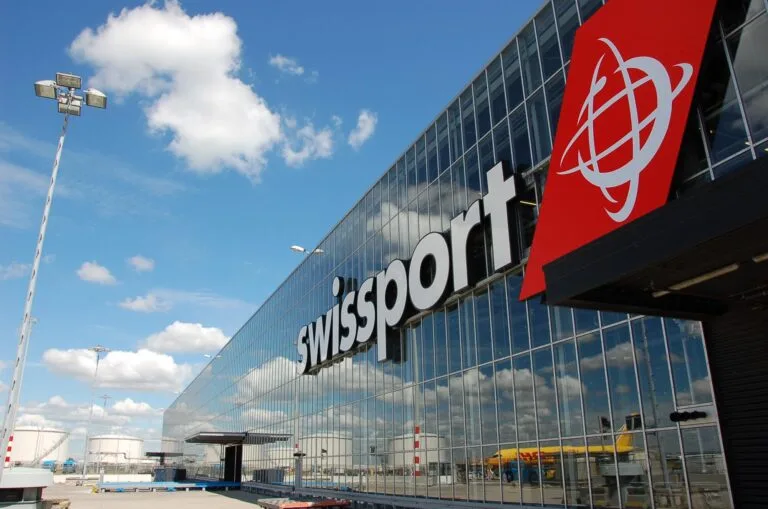- Swissport is positioning for Southeast Asia growth by relocating top APAC leadership to Singapore, monitoring market opportunities, and leveraging its broader Asia-Pacific network to scale when conditions align
- The company emphasises standardisation and technology, using solutions like Cargospot Mobile, digital slot management, e-AWB compliance, and sustainability measures to ensure consistent, efficient operations across diverse airport environments
- Focus is on high-value and temperature-sensitive cargo, particularly pharma and perishables, with global expertise, certified facilities, and co-developed airline and forwarder services guiding potential future expansion in the region
As intra-Asian trade and e-commerce reshape regional cargo flows, Southeast Asia is becoming a critical frontier in global air freight. While competitors are racing in, Swissport is playing a longer game—quietly building its regional presence, deepening ties with carriers, and preparing to scale when conditions align.
The company, which operates cargo services at 279 airports in 45 countries, currently has no active cargo handling operations in Southeast Asia. But that absence appears more tactical than hesitant.
Regional leadership shift signals intent
Swissport has relocated both its APAC CEO, Brad Moore, and Chief Commercial Officer, Philemon Ibrahim, to Singapore—bringing top-level decision-making closer to where regional dynamics are shifting fastest.
“Asia-Pacific is one of Swissport’s most dynamic growth regions, where we continue to see strong demand for both ground handling and air cargo services,” said Dirk Goovaerts, CEO for Continental Europe, Middle East, Africa, and India, and Global Cargo Chair at Swissport.
The company’s current Asia-Pacific network includes operations in Melbourne, Sydney, and, most recentl,y Auckland, where a new cargo facility is serving as a model for future developments. That model, Swissport suggests, could be deployed in Southeast Asia once the market conditions make it viable.
“While we do not yet operate cargo facilities in Southeast Asia itself, we actively monitor market opportunities and maintain close ties with airlines and other stakeholders in the region,” said Goovaerts. “We believe the Southeast Asian cargo handling market will expand rapidly in the coming years, and Swissport intends to play a role in its evolution when the right opportunities arise.”
The company’s expansion strategy leans heavily on its ability to standardise services and deploy technology across diverse infrastructure environments. Swissport’s Cargospot Mobile solution, now live in more than 75 warehouses, supports real-time KPI tracking and operational efficiency even where airport systems vary widely.
“Swissport applies the same high standards worldwide, leveraging both global expertise and digital innovation to deliver consistent, reliable services,” Goovaerts noted. In Auckland, Swissport has implemented digital slot management, self-service kiosks, and full e-AWB compliance. The site also incorporates sustainability measures in line with the company’s global ESG commitments—elements the company says would underpin any Southeast Asian facility from day one.
“We are well-positioned to support airlines and forwarders as regional trade flows continue to grow,” Goovaerts said.
Targeting growth in pharma and perishables
Swissport sees high-value and temperature-sensitive cargo as key drivers of regional demand. With 23 Pharma Centres and 65 pharma-certified warehouses globally, the company has established protocols for sensitive goods, including in South Korea’s Incheon facility.
“Our staff undergo ongoing training, ensuring safety, security, and quality throughout the supply chain,” Goovaerts said. “Similar capabilities will be central to any potential future expansion in Southeast Asia, where demand for pharma logistics is expected to grow rapidly.”
While Swissport has not committed to specific sites or timelines, it is clearly laying the groundwork—especially through its relationships with airlines and forwarders.
“We work closely with airlines and forwarders to co-develop tailored service offerings and integrate our processes with theirs, creating efficiencies and reducing complexity,” said Goovaerts.
Swissport’s message is clear: Southeast Asia is a priority, but not a rush job. The company sees opportunity but is waiting for the right conditions to move, leveraging its broader Asia-Pacific network and proven rollout model as leverage.
“Southeast Asia is set to become one of the fastest-growing cargo hubs globally,” Goovaerts said. “We are closely monitoring developments and remain committed to expanding our footprint in the region.”



